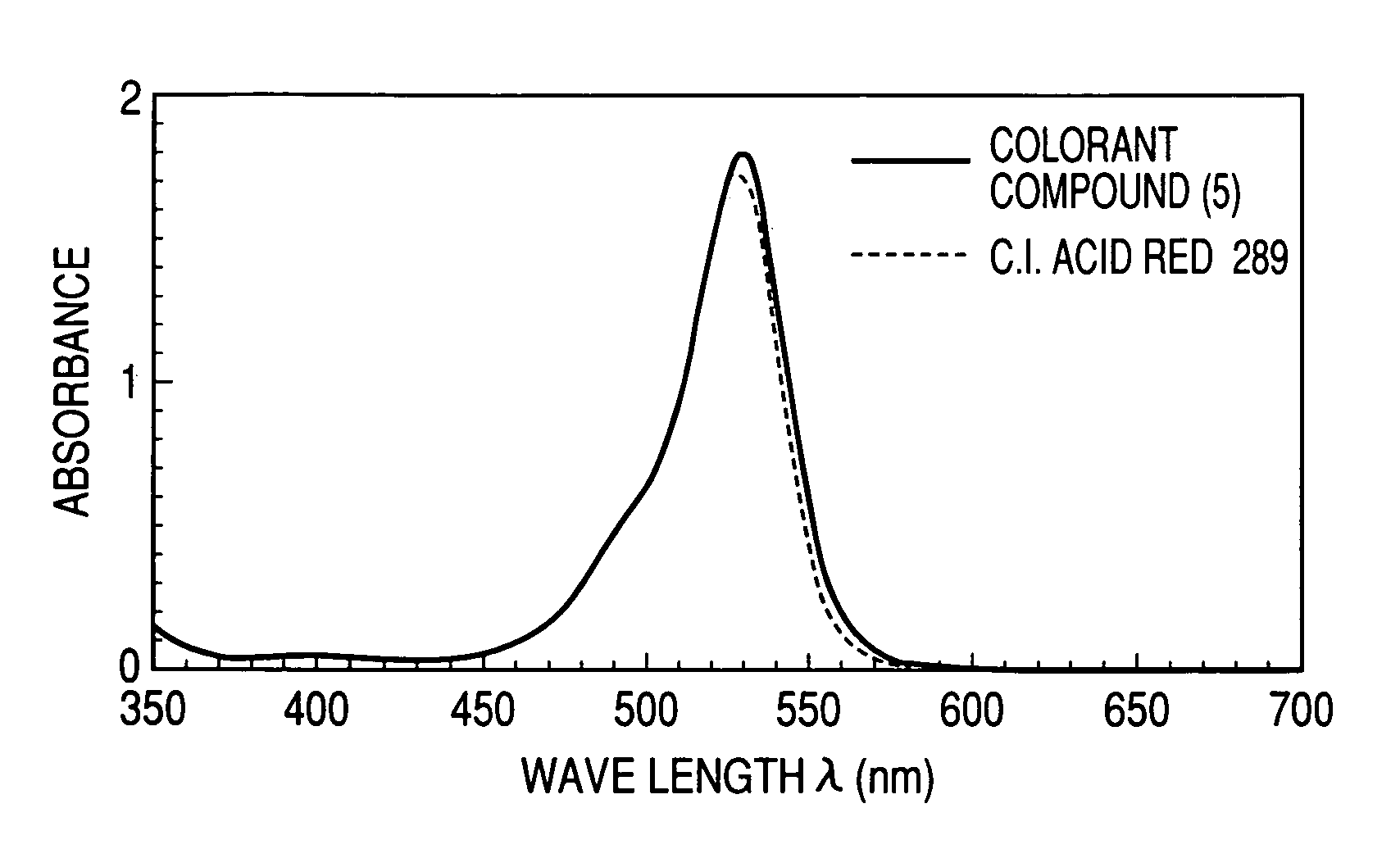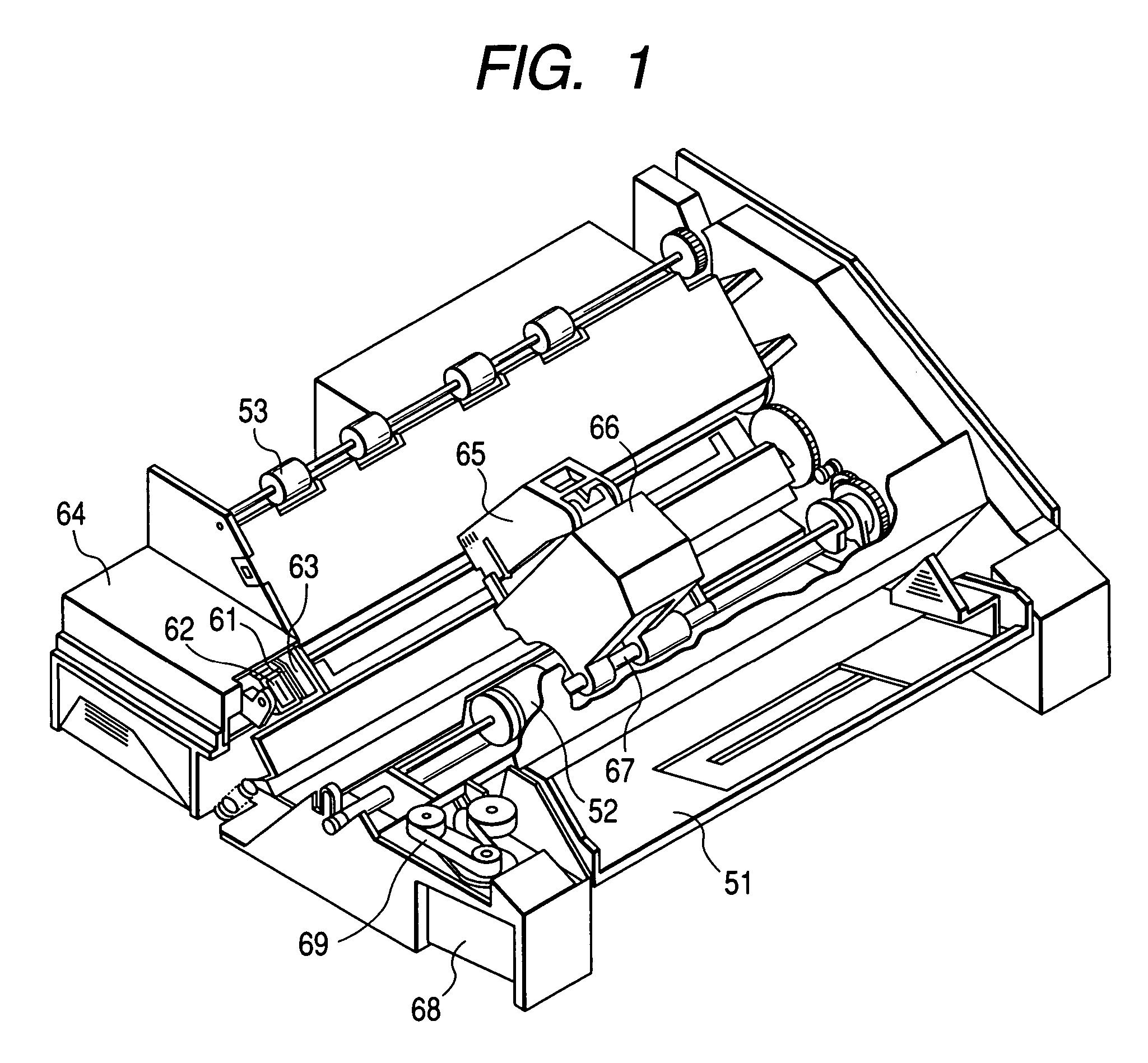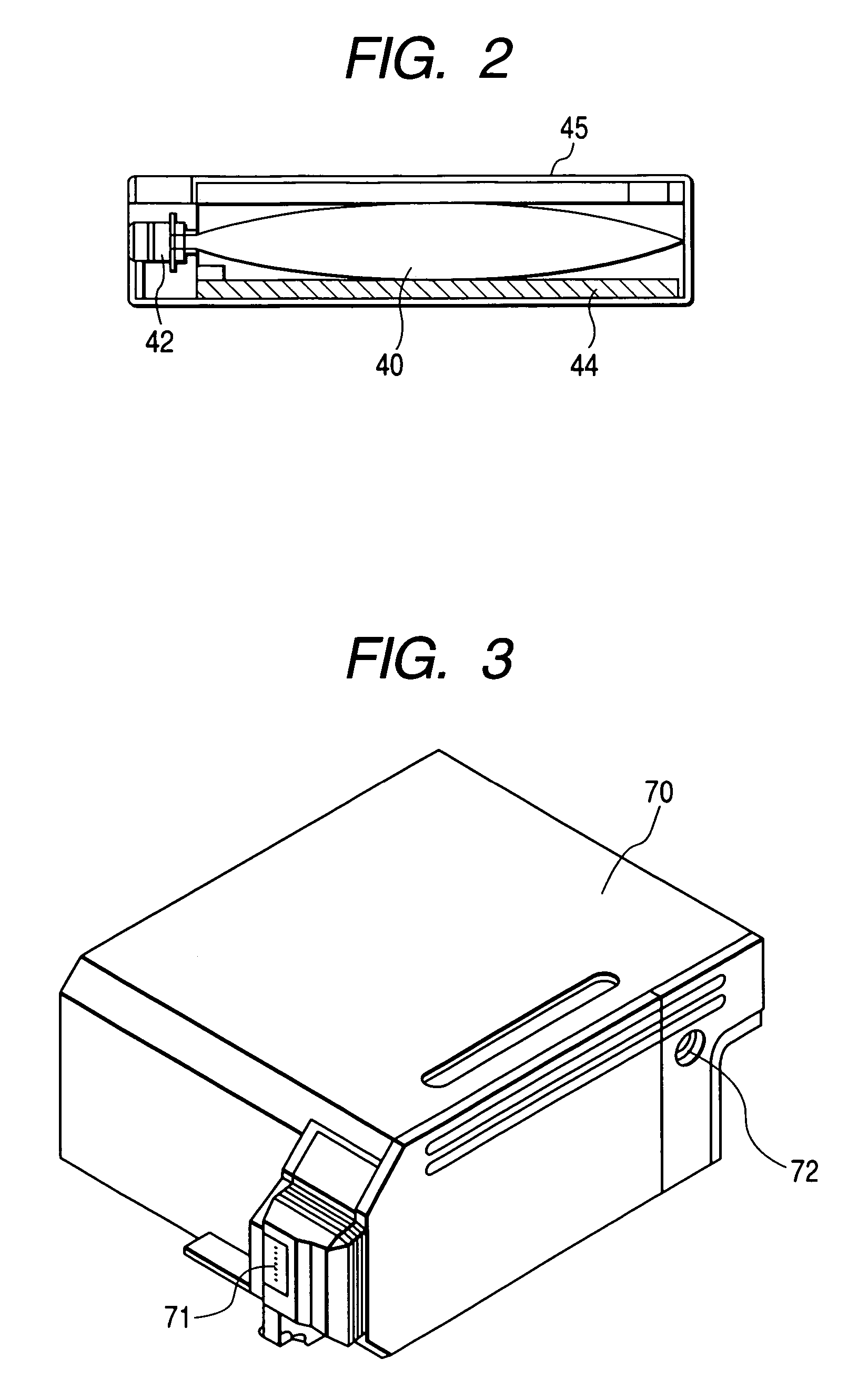Colorant compound, ink, ink tank, recording unit, recording apparatus and recording process
a technology of ink and dye, which is applied in the direction of dyeing process, instruments, organic chemistry, etc., can solve the problems of poor color reproduction quality and image transparency, poor water fastness of dye recordings formed by inks containing water-soluble dyes, and easy bleeding of dyes, etc., and achieves excellent spectral reflection properties such as coloring ability and transparency, and high solubility
- Summary
- Abstract
- Description
- Claims
- Application Information
AI Technical Summary
Benefits of technology
Problems solved by technology
Method used
Image
Examples
example 1
[0060]A colorant compound represented by the general formula (1) was obtained in the following manner.
synthesis example 1
[0061]A colorant compound represented by the following formula (5), in which in the general formula (1), R1 and R2 were methyl groups, R3 was an ethyl group, and An− was a chloride ion, was synthesized in the following manner.
[0062]
[0063]2,6-xylidine (7.3 g) and 3,6-dichlorofluoran (7.4 g) represented by the formula (3) were heated at 200° C. for 3 hours in the presence of zinc chloride (4.1 g) in sulfolane (20 mL). After the resultant solution was cooled, the solution was poured into 2 M hydrochloric acid (50 mL), and deposited crystals were separated by filtration. After the crystals were washed with water and dissolved in THF, the crystals were reprecipitated in n-hexane to purify them and dried, thereby obtaining a leuco compound represented by the general formula (4) and having a structure that both R1 and R2 are methyl groups. The fact that the reaction product thus obtained is the leuco compound having the above structure was identified by NMR analyses and HPLC analysis. The ...
synthesis example 2
[0079]A colorant compound represented by the following formula (6), in which in the general formula (1), R1 and R2 were methyl groups, R3 was an ethyl group, and An− was a 2-naphthalenecarboxylate ion, was synthesized in the following manner.
[0080]
[0081]Colorant Compound (5) (10 g) obtained in Synthesis Example 1 and sodium 2-naphthalenecarboxylate (4.6 g) were dissolved in methanol (100 mL), and a reaction was conducted for 24 hours under reflux. After a deposited salt was separated by filtration and the solvent in the filtrate was distilled off, the residue was extracted with chloroform (500 mL) and the resultant extract solution was washed with water. Finally, this solution was dried over magnesium sulfate (50 g) and concentrated, and the resultant concentrate was then reprecipitated in n-hexane to purify it, thereby obtaining a compound (hereinafter referred to as “Colorant Compound (6)”) having a structure represented by the formula (6). The fact that the compound thus obtained...
PUM
| Property | Measurement | Unit |
|---|---|---|
| temperature | aaaaa | aaaaa |
| temperature | aaaaa | aaaaa |
| temperature | aaaaa | aaaaa |
Abstract
Description
Claims
Application Information
 Login to View More
Login to View More - R&D
- Intellectual Property
- Life Sciences
- Materials
- Tech Scout
- Unparalleled Data Quality
- Higher Quality Content
- 60% Fewer Hallucinations
Browse by: Latest US Patents, China's latest patents, Technical Efficacy Thesaurus, Application Domain, Technology Topic, Popular Technical Reports.
© 2025 PatSnap. All rights reserved.Legal|Privacy policy|Modern Slavery Act Transparency Statement|Sitemap|About US| Contact US: help@patsnap.com



